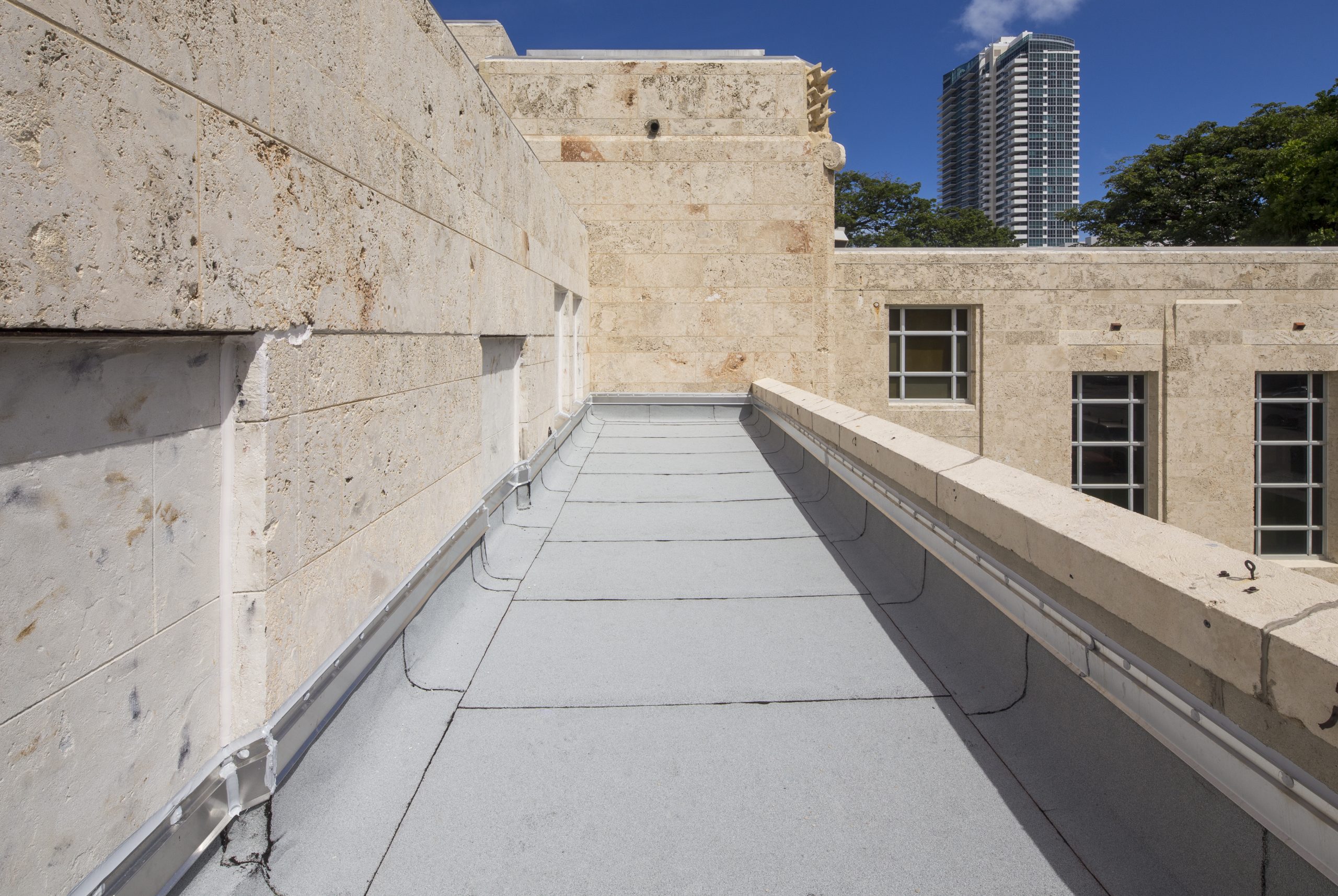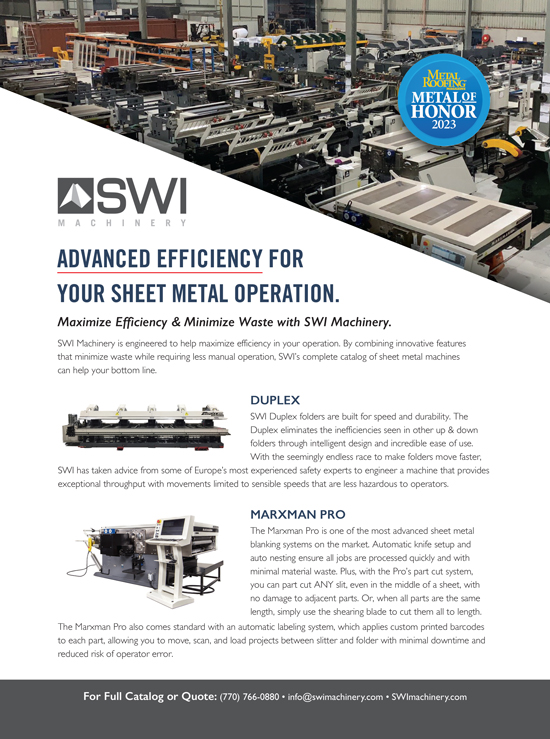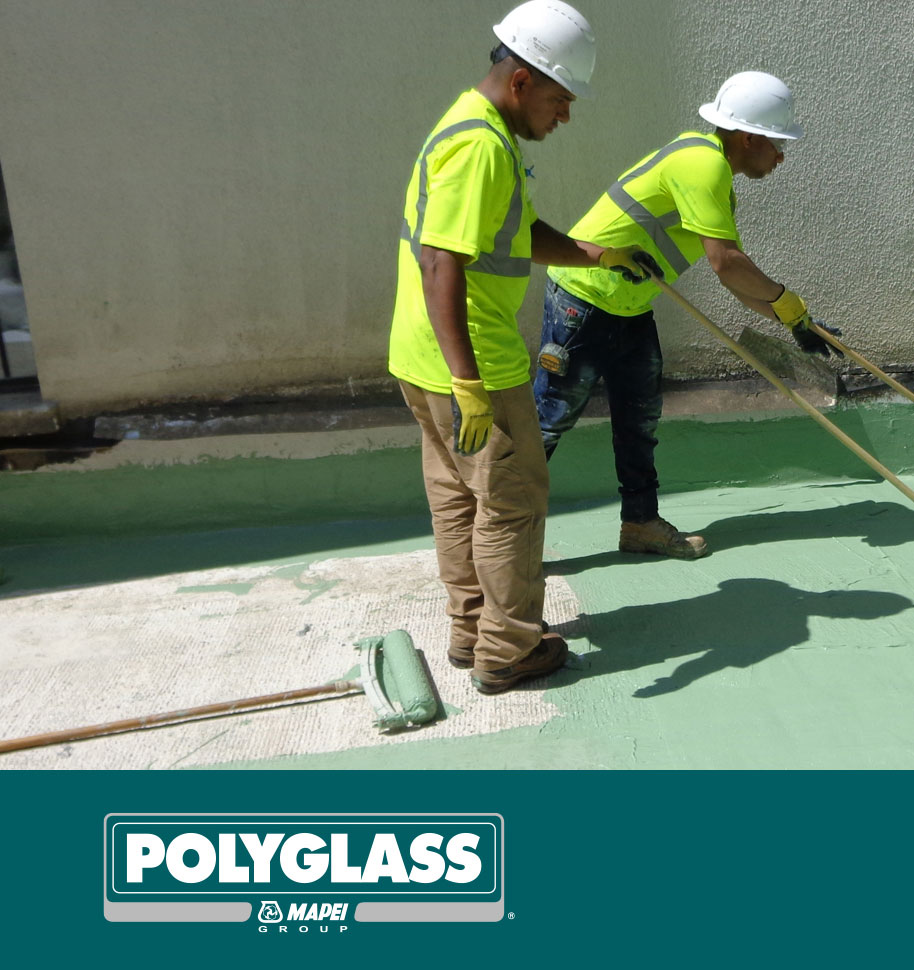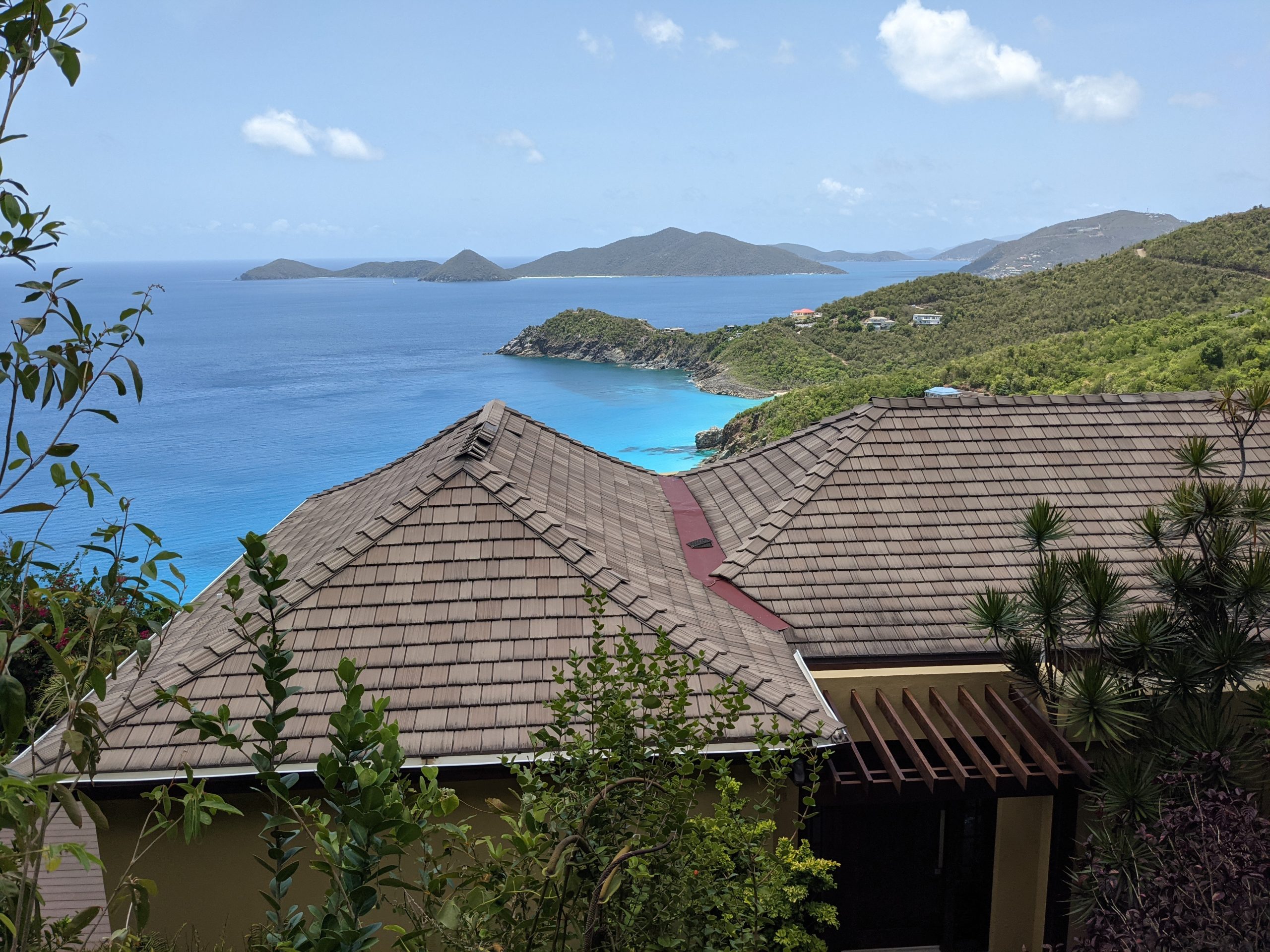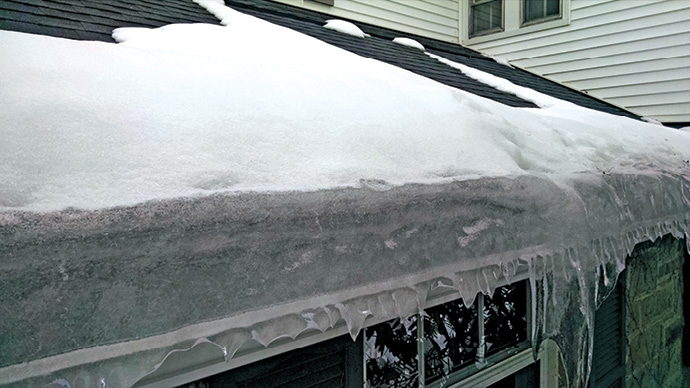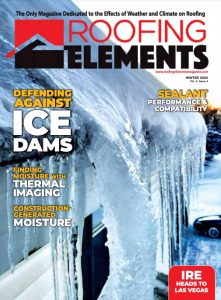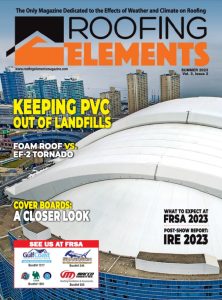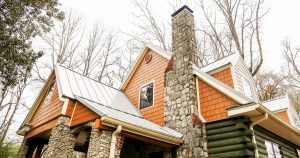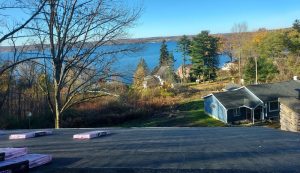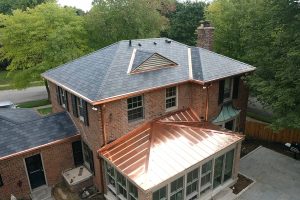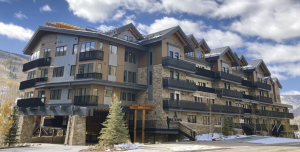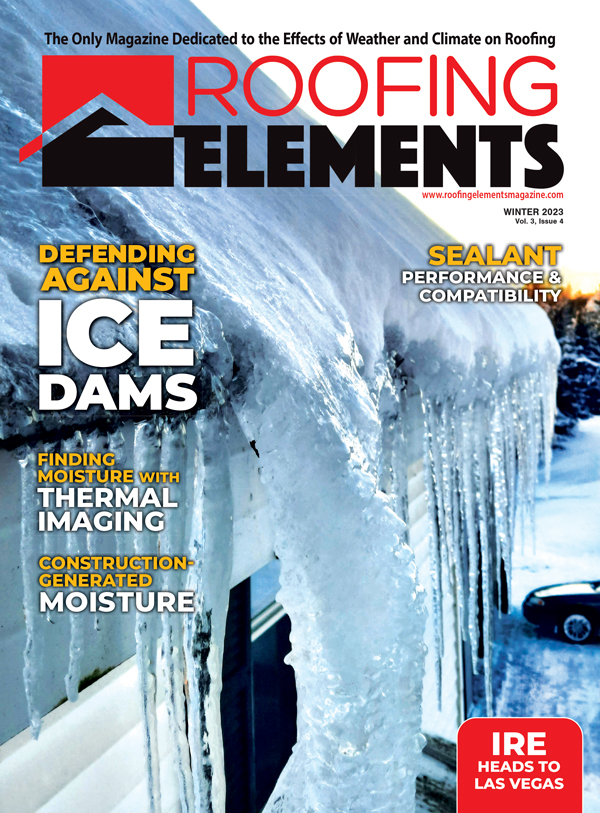HEAT: NO ESCAPE
BY Jason Smith, Senior Chemist, The Garland Company
The one weather variable that all roofs will face at some point, regardless of their geographic location, is heat. While some climate zones may have greater variability and more severe winters, all roofs will need to measure up to some period of intense UV radiation and the heat that comes with it.
How a roof withstands heat can, in the near term, have a direct effect on the energy efficiency of the building and the comfort of those inside. Over time, a roof that doesn’t hold up against heat can lead to an early need for replacement or restoration, and can even contribute to urban heat islands that are proven to have a negative impact on an entire community. In this article, we examine what heat does to a roofing system and how you can best prepare your roof for the heat.
The sun is an inescapable constant in roofing. With the sun comes its two byproducts: UV radiation and heat. UV radiation penetrates into the polymer binder and bitumen, targeting specific molecular sites to chemically break down and stiffen the membrane. This leads to cracking that presents a problem during a freeze event. Granule retention can also suffer from UV degradation. The mineral granules on modified bitumen membranes act in a similar fashion as sunscreen on skin, protecting the polymer modified blend from the damages of UV radiation. As the minerals gradually fall off, the polymer and bitumen are at the mercy of UV degradation. The ability of a membrane to retain minerals is measured by a “scrub test,” which is exactly what its name implies, as a mechanical brush repeatedly goes across a membrane sample to see how many minerals are lost and how many stay on the sheet. While the ASTM standard passes a sample that loses 2g or less of mineral, new advances in compound viscosity optimization are leading to some manufacturers delivering results with as little as 0.5g of mineral loss, a positive sign for a membrane’s resistance to heat long-term. Single-ply surfaces fare well in the heat because the chemistry itself is its best defense. TPOs are regarded as being highly UV resistant while PVCs and KEE-PVCs are more geared for high-temperature surfaces.
TPO single-ply surface are formulated for excellent resistance to heat and UV resistance because there is nothing in its formula that UV radiation can further break down. In spite of this superior weather resistance, TPO sheets have their drawbacks, including issues with weld popping, crazing, and cracking. They do wear eventually, and once the scrim reinforcement is exposed, the sheet is doomed.
PVC single-ply roofs are more flexible than TPO roofs, but during continual heating the PVC plasticizers, are leached out. The use of KEE as a solid flexibilizer eliminates the need for a plasticizer and does not leach out upon heat exposure. Both are usually white, which cools down the surface and slows the degradation process.
Heat exacerbates the UV degradation process and contributes to the formation of surface blistering. When moisture is inadvertently trapped in mopping voids or on the interply sheet during storage, evaporating water has no place to go as it tries to penetrate through an impermeable top sheet. Physics tells us that pressure and volume are directly related to temperature: If temperature increases, either the pressure or volume must increase proportionally. Water vapor trapped in a void (fixed volume and pressure) beneath a membrane on a cool morning (low temperature) must either gain pressure or increase its volume, or a blend of both, as the heat of the day increases. The heat from the sun softens the asphalt somewhat to allow the increased pressure to expand the void sideways or toward the top cap sheet. This cycle continues, sometimes gathering more trapped water as voids link with other voids until the blister is quite large. The result is a blister that can range from the size of a blueberry to a few feet in diameter.
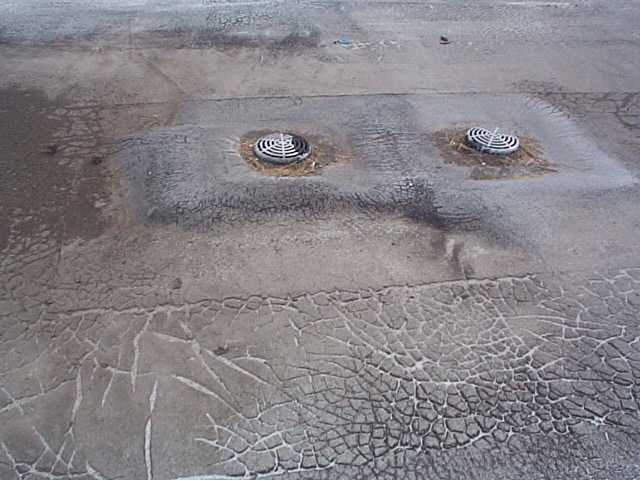
Images courtesy of Garland Co.
Further, when surface heating is followed by a rapid cooling process such as a sudden rain, there are dimensional changes that occur in the membrane that can cause stress cracking or other failure. Additionally, heat on a roof, especially a wet one, provides the perfect conditions for microbial growth. If there are not safeguards in the formulation to account for microbial growth, it will not take long for a continually wet roof to show signs of algal growth (reddening or blackening), or fungal attack. Advances in polymer modification have improved the longevity of membranes by retaining the minerals longer, purposely engineering the polymers with more heat resistant or UV stable components. Furthermore, the use of cool roof coatings such as white or aluminum acrylics, polyurethanes, or silicones can lower the surface temperature by as much as 50 to 60°F. Proper drainage at time of installation remains the best way to remove standing water and the risk of microbial growth in those areas.
Heat is an inevitable challenge to a roofing system, but with the right focus on the “three R’s” a roofing system can successfully fight the heat, protect the comfort of the building’s inhabitants, and may have a positive impact on an entire community’s climate:
RETENTION: For modified bitumen membranes, how well does the cap sheet retain its minerals, preventing loss and providing added protection to the compound that can extend the roof’s life?
REFLECTIVITY: How bright is the coating or mineral? Has it been certified by the Cool Roof Rating Council (CRRC)?
RESISTANCE: Is the roofing system formulated for resistance to heat and UV?

